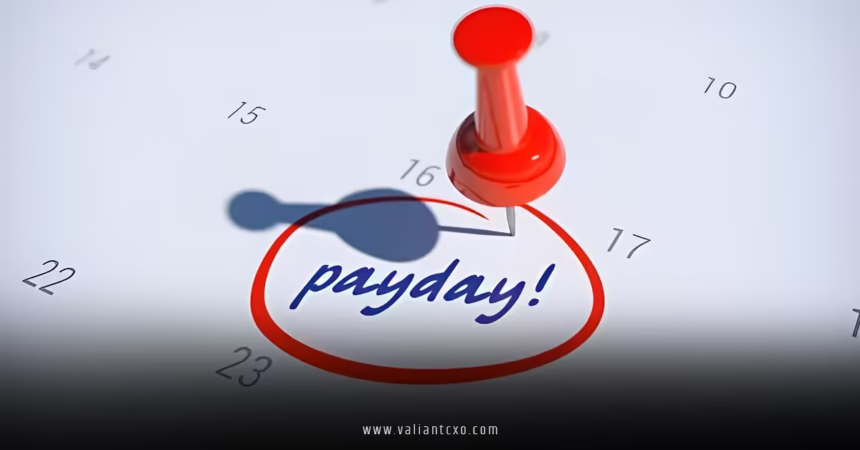Payday superannuation compliance guide is your go-to resource if you’re an Australian employer scratching your head over the upcoming changes to how you handle super contributions. Imagine this: instead of lumping those payments into quarterly batches like you’ve been doing for years, you’re now syncing them right up with payday. It’s like upgrading from an old clunky bike to a sleek electric scooter – faster, more efficient, but yeah, it takes some getting used to. In this comprehensive payday superannuation compliance guide, we’ll break it all down in plain English, so you can navigate these reforms without breaking a sweat. Whether you’re running a small cafe or a growing tech startup, staying compliant isn’t just about avoiding fines; it’s about building trust with your team and securing their future. Let’s dive in and make sense of it all, shall we?
What Exactly is Payday Superannuation?
Have you ever wondered why super payments feel like an afterthought, tacked on every few months? Well, that’s changing with payday super. At its core, this reform flips the script on superannuation guarantee (SG) contributions. From July 1, 2026, employers like you must pay super on the same day you dish out salaries and wages. But here’s the kicker – those funds need to hit your employees’ super accounts within seven calendar days of that payday. Think of it as tying a bow on their paycheck; wages in one hand, super boost in the other.
This payday superannuation compliance guide wouldn’t be complete without explaining the “why” behind it. The government spotted a massive gap – billions in unpaid or delayed super each year, which is basically wage theft in disguise. By aligning super with pay cycles, it empowers workers to spot issues right away. No more waiting quarters to check if their retirement nest egg is growing. For you as an employer, it means smoother cash flow in the long run, but only if you prep smartly. Remember, this applies to all businesses paying ordinary time earnings (OTE), from full-timers to casuals. It’s not optional; it’s the new normal.
Why the Shift to Payday Super? The Big Picture Benefits
Picture this: your employee logs into their super app right after payday and sees that fresh contribution compounding interest already. That’s the magic of payday super – it supercharges retirement savings. Studies show that for a typical 25-year-old on median income, switching from quarterly to payday payments could add thousands to their balance by retirement. We’re talking real money, like an extra $6,000 or more, just from timelier deposits letting compound interest work its wonders.
But benefits aren’t just for employees. In this payday superannuation compliance guide, I want to highlight how it helps you too. Quarterly payments often build up like a snowball, creating lumpy liabilities that strain your books. Paying on payday spreads it out, making budgeting more predictable. Plus, it cuts down on unpaid super drama. The Australian Taxation Office (ATO) estimates around $3-5 billion goes missing annually – yikes! With better tracking via Single Touch Payroll (STP), discrepancies get flagged early, saving you from audits and headaches. Rhetorically speaking, wouldn’t you rather be the boss who’s ahead of the curve, fostering loyalty by showing you care about their future? It’s a win-win analogy: like oiling a machine to run smoother for everyone.
Of course, change isn’t without bumps. Some worry about cash flow crunches, especially for small businesses. That’s why this payday superannuation compliance guide emphasizes preparation – get your systems tuned now to glide through the transition.
Key Timeline: When Does Payday Super Kick In?
Timing is everything, right? Mark your calendars: payday super officially starts on July 1, 2026. But don’t wait until then to act. The legislation is being introduced to Parliament around now (October 2025), with drafts already circulating for feedback. By mid-2026, you’ll need your payroll humming in sync.
In the lead-up, watch for milestones. The SG rate hits 12% on July 1, 2025 – a complementary boost. Then, the ATO’s Small Business Superannuation Clearing House shuts down on July 1, 2026, so if you’re using it, transition early. New employees get a grace period: contributions for their first two weeks can wait until after that. Out-of-cycle bonuses? Roll them into the next regular payday.
This payday superannuation compliance guide stresses not procrastinating. Start testing in early 2026 to iron out kinks. The first year (2026-2027) has a softer ATO approach, but post that, full enforcement ramps up. Think of it as a soft launch – use it to perfect your process.
Understanding Qualifying Earnings and Calculations
Diving deeper, what’s “qualifying earnings” (QE)? It’s basically OTE plus certain other payments. You calculate SG as 12% of QE per payday. Simple math, but accuracy matters. Use payroll software to automate this – no more manual spreadsheets prone to errors.

Your Obligations as an Employer: Breaking It Down
Alright, let’s get practical. As an employer, your main gig is ensuring those super payments land on time. Miss the seven-day window? You’re hit with the Super Guarantee Charge (SGC), which includes the shortfall, notional earnings (interest compounding daily), and an admin uplift up to 60%. Ouch – and it’s not fully deductible anymore, wait no, actually the charge itself is deductible, but penalties aren’t.
In this payday superannuation compliance guide, I’ll walk you through the must-dos. First, report OTE and total super liability via STP for each employee. This lets the ATO match data with super funds, spotting issues fast. Second, choose a reliable payment method – payroll-integrated clearing houses are gold. Third, handle exceptions wisely: new hires get 14 extra days, rejected payments up to 42 days in some cases, but don’t abuse it.
What if payments get rejected? Funds have three business days to process or bounce them back. Fix errors ASAP to stay compliant. It’s like a relay race – hand off the baton cleanly to avoid penalties.
Calculating Super Contributions Accurately
Crunch the numbers right every time. SG is 12% of OTE, but include allowances, overtime if applicable, and exclude extras like reimbursements. Tools like STP make this seamless. Analogy: treat it like baking – measure precisely or the cake flops.
Payment Due Dates and Exceptions
Seven calendar days from payday – that’s your deadline. Exceptions for irregular payments or disasters, but rely on systems, not excuses.
Reporting Requirements via STP
STP isn’t new, but now it’s supercharged. Report per pay run, including OTE and SG amounts. It’s your transparency ticket.
How to Prepare Your Business for Payday Super
Preparation is key in any payday superannuation compliance guide worth its salt. Start by auditing your payroll setup. Does it handle frequent payments? If not, upgrade to software like MYOB or Employment Hero that automates everything.
Next, crunch cash flow projections. More frequent outflows mean tighter management – maybe set up a dedicated super account. Train your team: HR and finance folks need to know the ropes. Run mock pay runs in 2026 to test.
Consider partners: super funds like Mercer or Australian Retirement Trust offer portals for easy payments. And if you’re a small biz, explore alternatives to the retiring ATO clearing house.
Updating Your Payroll Systems
Go digital. Integrated systems reduce errors by 75%, per some studies. It’s like giving your payroll a turbo boost.
Choosing the Right Clearing House
Pick one with fast processing and error alerts. Reliability trumps cost here.
Training Your Staff for Compliance
Empower your team with workshops. Knowledgeable staff = fewer slip-ups.
Common Pitfalls and How to Avoid Them in Payday Super
Even pros trip up. Common mistake: sticking to quarterly habits post-2026 – that’s high-risk per ATO guidelines. Another: data errors causing rejections. Avoid by double-checking employee details like TFNs.
Cash flow shorts? Plan ahead with buffers. Ignoring STP updates? Big no-no. This payday superannuation compliance guide advises regular audits to catch issues early. Think metaphorically: it’s like maintaining a car – regular checks prevent breakdowns.
Penalties for Non-Compliance: What You Risk
Nobody likes fines, but forewarned is forearmed. SGC starts with the shortfall, adds daily interest (around 11%), and an uplift that scales with repeats – up to 60% for chronic offenders. Plus, a 50% penalty if unpaid within 28 days of assessment.
In the first year, ATO’s risk-based approach helps: low-risk (prompt fixes) gets no scrutiny; medium gets maybe; high gets priority. Stay low-risk by attempting on-time payments and correcting fast.
Benefits for Employees and Employers Alike
We’ve touched on this, but let’s expand. Employees gain transparency, faster growth, and empowerment to chase unpaid super. For you? Reduced admin over time, better employee relations, and a competitive edge in talent attraction.
This payday superannuation compliance guide sees it as an opportunity – embrace it to show you’re a forward-thinking boss.
Resources and Support for Payday Super Compliance
Stuck? The ATO’s your first stop for drafts and tools. Treasury factsheets break it down simply. Industry bodies like CPA Australia offer webinars.
In this payday superannuation compliance guide, I recommend bookmarking official sites. Join forums for peer tips – knowledge sharing beats going solo.
Where to Find Official Guidance
ATO and Treasury portals are goldmines.
Conclusion: Mastering Payday Super for a Brighter Future
Wrapping up this payday superannuation compliance guide, remember: from July 2026, syncing super with paydays is non-negotiable, but with prep, it’s manageable. We’ve covered the what, why, how, and pitfalls – from calculations to penalties, benefits to prep steps. Stay proactive: update systems, train up, and monitor cash flow. You’ll not only comply but thrive, boosting your team’s retirement while streamlining ops. Don’t let this catch you off guard – start today and turn compliance into a strength. Your future self (and employees) will thank you.
FAQs
What is the main purpose of a payday superannuation compliance guide?
A payday superannuation compliance guide helps employers understand and meet the new requirements for paying super on payday, ensuring timely contributions to avoid penalties and boost employee savings.
When does the payday superannuation compliance guide become relevant for my business?
The changes outlined in any payday superannuation compliance guide kick in on July 1, 2026, but preparation should start now to update systems and processes smoothly.
How can I avoid penalties according to a payday superannuation compliance guide?
Follow a payday superannuation compliance guide by making contributions within seven days of payday, reporting accurately via STP, and fixing errors promptly to stay in the ATO’s low-risk zone.
What tools are recommended in a payday superannuation compliance guide for small businesses?
A solid payday superannuation compliance guide suggests using integrated payroll software, clearing houses, and ATO resources to automate payments and ensure accuracy.
Are there exceptions in the payday superannuation compliance guide for new employees?
Yes, a payday superannuation compliance guide notes a 14-day grace period for new hires’ first contributions, plus extensions for rejected payments in certain cases.
Read More:valiantcxo.com


